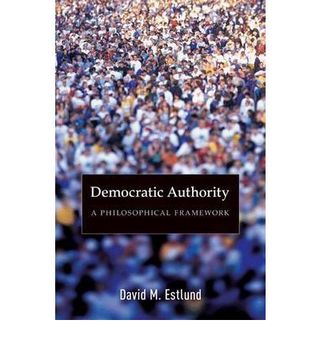
Richard Marshall interviews David Estlund in 3:AM Magazine:
3:AM: You’ve defended democracy from the attack that it is the rule of the know-nothings with what you call ‘epistemic proceduralism.’ Before we look at your defence could you say something about the attack. On the face of it it does seem mad that experts aren’t the people we go to to govern. After all, we wouldn’t want a non-expert dentist, so why not use the same approach to dealing with problems of government? What’s the problem with just ensuring that decisions being made are good decisions by handing power over to the experts?
DE: That’s exactly the question that motivated my work on democracy (as you know), and of course it’s the ancient challenge to democracy stemming from Plato. I didn’t find the modern idea very satisfying—that we could answer that challenge by pointing to a right of the people to rule themselves. That would have the advantage of explaining why the people get to rule even if they aren’t good at it. The right to rule oneself individually doesn’t seem (to us moderns) to depend on whether we’d be good at it, so this might seem like an extension. But the analogy with a (say, Millian) right to self-rule, interpreted as individual immunity from interference in self-regarding choices, is very weak. When you “rule” as a member of the democratic people you contribute to coercing others, not just yourself. That’s precisely the limit on the Millian idea of individual self-rule. So, I didn’t see that broad approach as an adequate answer to the ancient question: if your political decisions will affect (and even coerce) the prospects and choices of others, why should you get to do that even if you’re not good at it? Plato’s challenge is powerful.
So, we have to confront the possibility that ruling ought to be done by those who can actually do it well (though I reject it in the end). I find that students, at least, squirm at the very idea that some might be able to rule better than others, and yet they nod happily at the suggestion that some are much worse than others. So, since the stakes of political decision are so very high, why shouldn’t rule be by the much-less-bad? I came to think that an important key lies in the fact that, even if we agree that some would be better and some worse at ruling justly and well, we are very unlikely to agree on who is in which category. It would be one thing if all decent points of view did agree, but that’s just not plausible. The problem here is a moral one, not one about how to keep the dissidents in line. So, on one hand, it’s not plausible that the people simply have a right to collective self-rule even though their acts will momentously affect and interfere with others against their will. On the other hand, and here we push back against Plato, there is no strong reason to think that someone’s being correct about what should be done is enough to justify their having the power to impose it on others. What’s driving things, on this telling, is not a positive right of self-rule but some sort of right (hopefully defeasible!) not to be ruled, wisely or otherwise, by others. While the ancient puzzle is first raised by pointing to ignorance of the masses, it turns out that the moral problem might not mainly be about their ignorance. After all, there is still a problem for rule by the non-ignorant. So, at this point, an initial answer—err, question—to your question why we shouldn’t be ruled by the experts, is roughly: they might be correct, but what makes them boss?
More here.
